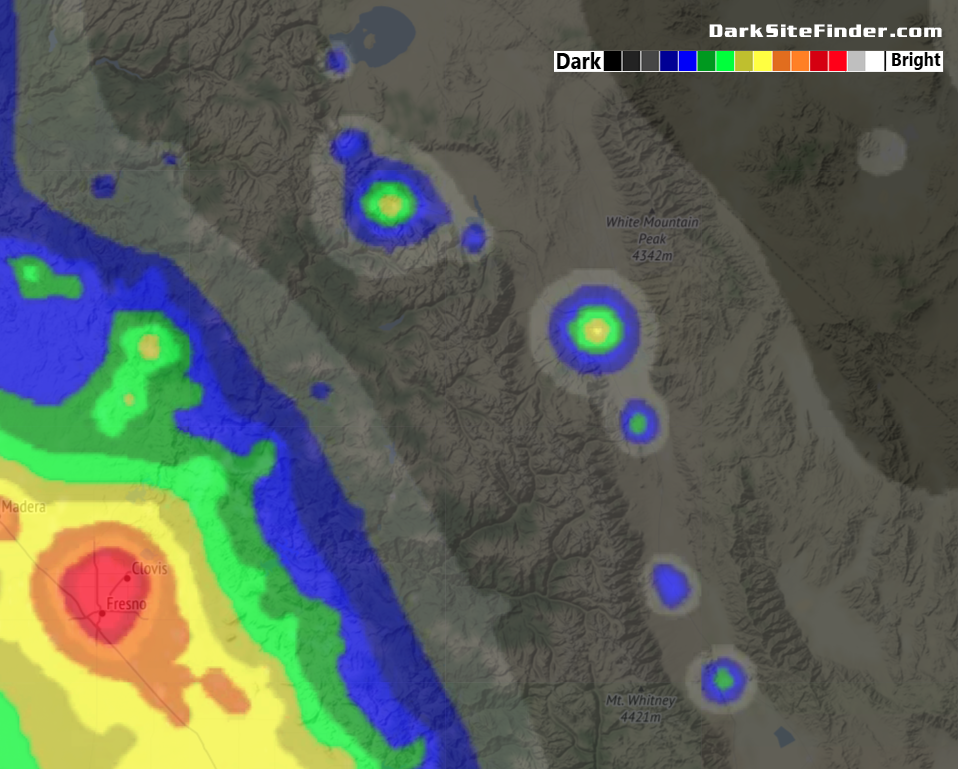Eastern Sierra Sky Darkness Report
As light pollution spreads across rural lands throughout the United States, it’s important to keep the few remaining dark areas DARK — and our beloved Eastern Sierra is no exception! The ESO is dedicated to keeping the nighttime skies over the Eastern Sierra as dark as possible. We record sky darkness measurements around the Eastside regularly, and report the findings here. While we are lucky enough to enjoy very dark skies in these parts, there is still room for improvement, and reason to be careful to not become complacent in the preservation of darkness.
Keep the Eastern Sierra Dark!
UPDATE: Inyo County is currently exploring a Dark Skies/Exterior Light Ordinance — Learn More.
Latest Eastern Sierra Dark Sky Maps (click to enlarge) — 9/24/18 — DarkSiteFinder.com
Latest Measurements at the ESO
January 3rd, 2019: 21:30 — 21.52 mag/arcsec^2
November 7th, 2018: 21:30 — 21.33 mag/arcsec^2
October 8th, 2018: 23:00 — 21.38 mag/arcsec^2
September 8th, 2018: 23:45 — 21.32 mag/arcsec^2
ESO Sky Darkness Measurements
Latest Measurements elsewhere on the Eastside
September 8th, 2018: SE edge of Lone Pine @ 23:00 — 21.20 mag/arcsec^2
What do these measurements mean?
Use the chart below to make sense of our findings, keeping in mind that our measurements are in mag/arcsec^2 (second column).
Device used for measurements:
Unihedron SQM-L narrow field meter measuring sky brightness in magnitudes per square arcsecond.
Method:
Reported readings are an average of at least 5 measurements within 30 degrees of zenith.
Specifications:
The Half Width Half Maximum (HWHM) of the angular sensitivity is ~10°. The Full Width Half Maximum (FWHM) is then ~20°. The sensitivity to a point source ~19° off-axis is a factor of 10 lower than on-axis. A point source ~20° and ~40° off-axis would register 3.0 and 5.0 magnitudes fainter, respectively.




